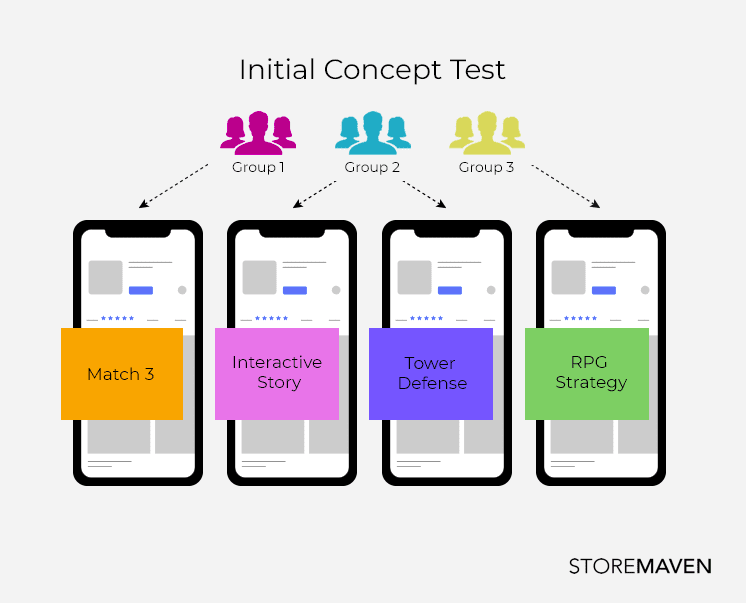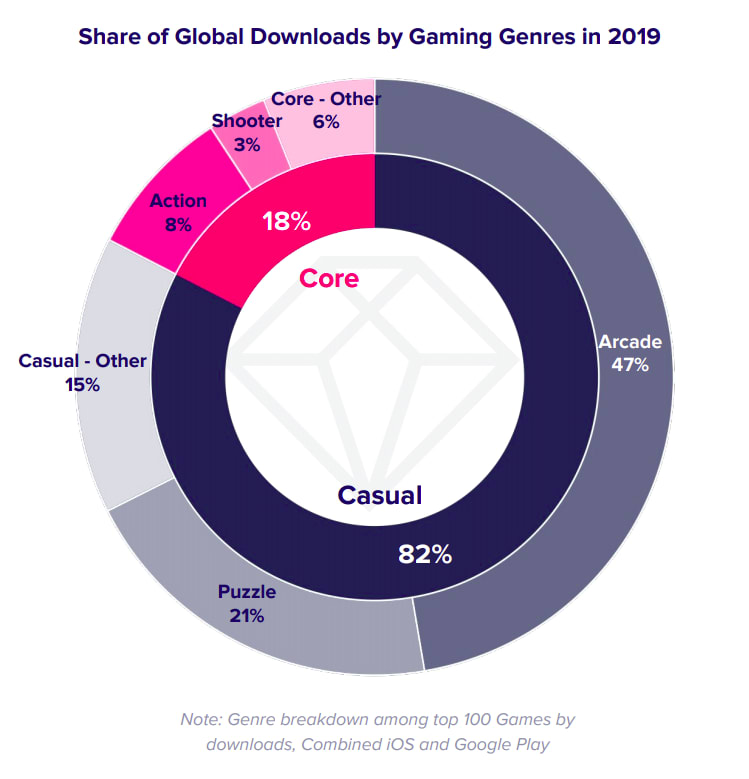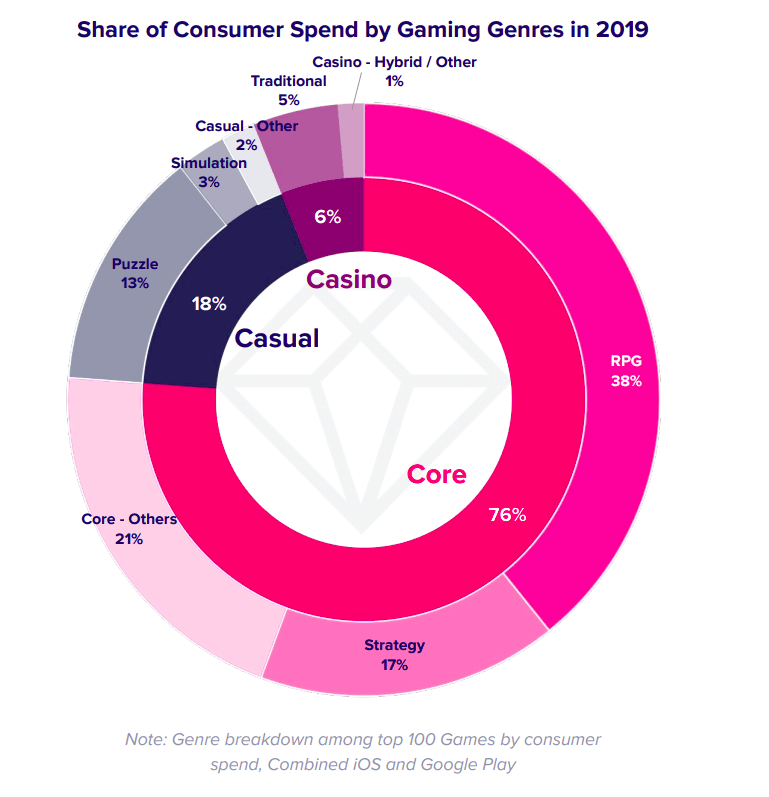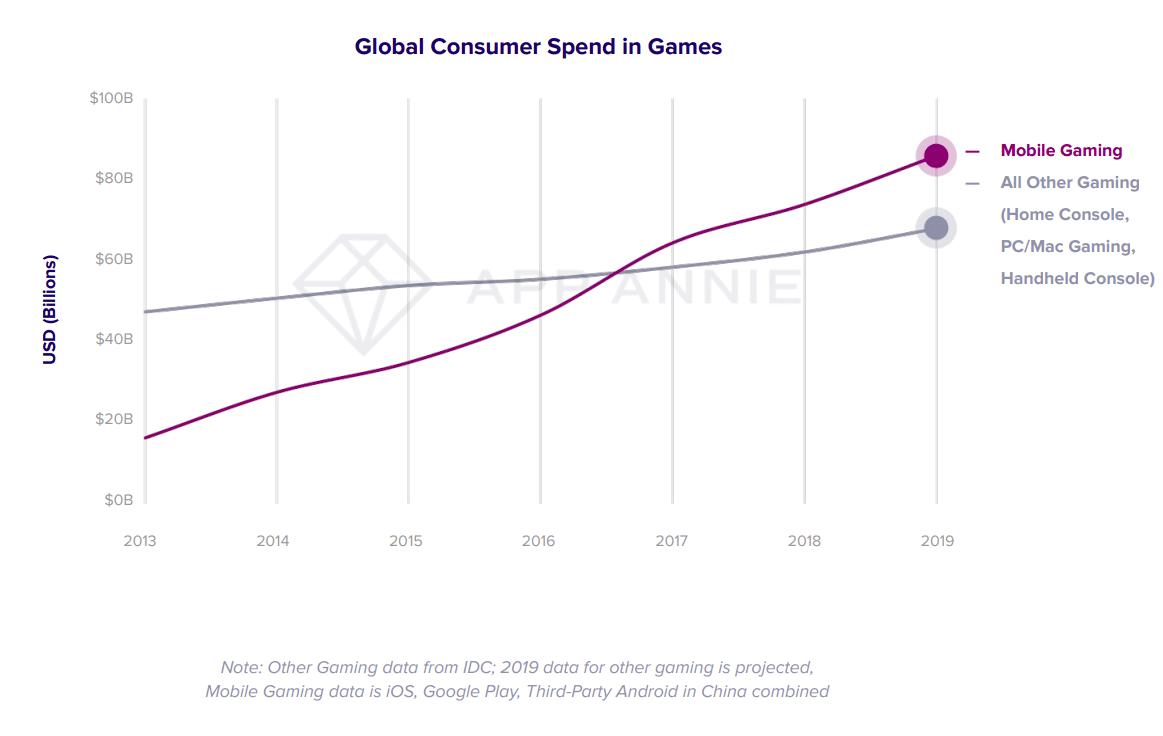It seems reconciliation is the theme of the day: China & Trump, Brad & Jen, Greta & world leaders, Bernie & Warren, the Oscars & male directors.
Will these rekindled love affairs last? Who knows but at least it makes for a good bedtime lullaby in the interim while we dream of the glory that the new decade will bring, and of ASO of course.
Conceptually speaking
As Mark Twain once said, “There’s no such thing as a new idea.” And he’s right. It’s simply a matter of combinations and permutations and, most importantly, timing.
So too with apps. There are a billion of them, well, more like 5 million but in any case, that’s a whole lot of competition. Too much. It’s why most of us struggle to make good dough out of our apps and why most fail. And it all harks back to our good quotable friend, Mr Twain.
So how do we know a good idea when it comes to us mid-shower song? We don’t. We need to check. We ask our friends, we ask our colleagues, we ask our local coffee guy. And if enough of our nearest and dearest stroke our ego, we think it’s great and we jump on it and pour our heart and soul and cash dollars into making it a reality. Because obviously the idea is just so wonderfully genius that once it becomes a reality users will be lining up around the block to get their hands on it.
But alas. Our nearest and dearest don’t really know what they’re talking about. And we can’t trust them. (We can love them but business advice is a whole other level of trust that isn’t part of the standard marriage vows for a reason.)
So who can you trust when it comes to your grand app ideas and whether they’re worth investment? Your actual (potential) real-life users. There’s nothing more accurate than hearing straight from the horse’s mouth. And not just asking one tooth or a few really good sample teeth but asking *all* of the teeth.
So, you know who you can trust but do you know what to ask? The options are a’plenty. You can discover things like:
- Is it worth adding a new franchise or new app?
- What is the best combination of IP and game mechanic? Best combination of app features with app concept/theme?
- What app concept or game will have the largest reach?
- What is the new app or game’s potential ROI?
- How do different demographics and interest groups respond to each concept?
- How does your existing network respond to this specific concept?
Concept testing is a matter of refinement. It’s about narrowing down options in order to make the best investments in development. And it’s a simple Texas two-step.
- Define your audience (age, location, interests, existing app users, etc.)
- Identify your concept (game mechanics, app functionality, storylines, themes, etc.)
The more specific your question, the more beneficial the results. The audience groups should be relevant enough that they reflect the key markets you’re in or looking to go in. The concept should be distinct enough so that there’s a clear winner without room for misinterpretation. The goal is to find what appeals to the largest audience with the lowest CPIs by finding the sweet spot between ad reach, overall conversion rate, and CPI, of course.

Whilst research groups are useful and can reveal qualitative user preferences on a smaller scale, concept testing allows for both quantitative (potential CPI and CVR) and qualitative data (such as which messages work in which placements) from thousands of highly targeted, quality users. It’s like comparing apples and oranges. And oranges are where it’s at.
The state of play
They’re plenty distracting and plenty needy. They keep us (well, those of us that have them) up at night and distracted by day. Are they safe? Are they happy? Are they eating? But have you ever stopped to think about what they’re downloading? Besides for the obvious, “I hope they’re not downloading the things they shouldn’t be”.
As much as our bosses might not want us daydreaming about those squishy squeezable cheeks and cute pseudo-worldly sayings, they might actually be exactly what we should be thinking about at work. They’re a treasure trove of strategy planning insights as their little (and less little) brains make up a core segment of users that we should definitely not be ignoring. Gen-Zers in particular.
According to App Annie’s “The state of mobile 2020” report (gated), 98% of Gen Z’s have a smartphone. In a self-serving twist of fate, our collective parenting error is our eternal sustenance. They have 60% more sessions per user in top-rated apps than older demographics. Gen Z’s mobile engagement is on fleek (that’s how they speak, right?) spending almost four hours per app, per month each among the top 25 non-gaming apps on average. In short, they spend a lot of time on their phone. No one is playing outside anymore and it’s not because of the weather.
In the US alone, 16-22 year olds spend $44 billion annually and influence an estimated $600 billion. While they might be spending our money, they’re still spending it and I don’t particularly care who’s footing the bill but on who’s making the purchase decisions.
It’s time to chase after this money if you’re not already doing so. They (anyone born between 1997 and 2012 or thereabouts) make up a third of the world’s population and just outgrew their big brothers and our good ol’ friends the millenials.
So how can we talk to these youths who seem to speak a whole different lingo? It’s much the same as being a good parent (of which I know absolutely nothing):
- Where are they?
- What are they doing?
- Who wants to speak to them?
Find out where they’re hanging out and if this is different to what we got up to when we were young. Hint: they’re not like us in a whole lot of ways. Take a look at their phones and intelligence reports to see the top apps they’re using across categories and across markets and then use this to see who’s trying their hardest to attract them in these categories and learn what offers are appealing to them.
Ok, so parenting is boring. And good parenting is even more boring (says the childless millennial). So what else is App Annie saying? A lot. It’s super interesting and well worth taking the time to read it yourself. There’s lots of graphs and charts and numbers that’ll make you look smart. Chief among those is the still-fascinating inverse relationship between downloads and consumer spend. Casual gets the most installs, core makes the most money.


In 2019, mobile games saw 25% more spend than in all other gaming mediums combined and are on track to surpass $100B across all mobile app stores in 2020. Mobile gaming is now officially the world’s most popular form of gaming. And here I was still banking on monopoly.

Listen, learn, implement, repeat
Sometimes I feel like I live in an echo chamber. I blabber on and on and no one really listens, I’m just entertaining myself (and let’s not kid, I keep myself enjoyably occupied quite well). But sometimes I come across an article that just gets it, like this one by Aude Boscher. She gets it. And then I smile because I know I’m not alone (even if I write this very much alone on my couch in my pajamas).
ASO is the epicenter of acquisition, product, and user signals. And it’s as useful for obtaining insights and it is for driving installs. And it’s this feedback loop that makes it so powerful. We’re spiraling upwards, people! (If we do it right and know the right how and when and what to do with it.)
The more we know about our users, the better we can serve them. And the better we serve them, the more specific and insightful our learnings get. It’s about drilling down to the core questions and the core motivations.
There exist two main areas of user data gathering. The first is obvious: read what they say. Your reviews are just sitting there. People wrote them hoping someone would read them and act upon them, and that’s exactly what you should do. Nothing more, nothing less. The only thing to remember is to validate whether you’re catering to one random person sitting alone on their couch (not me, the other lonely people who sit alone on their couch with nothing more to do than fiddle on your app and then write to you about it). Validate their points on Reddit forums and other platforms and see if it’s a general trend and if it is, address it – in product features, stability issues, design and more.
The second channel is through creative testing. By actually experimenting with designs and messaging you can see in real-time from real users what drives them to install and what drives them to drop. Which messages work and which messages don’t.
App retention rates depend on accurately serving user expectations so your app store product page should 1) best entice users to install and 2) best set them up for a positive experience on your app store product page.
It’s a simple iteration cycle (fancy synonym for feedback loop) that goes: Ideate, Validate, Implement-ate. (Note to future self: Forcing rhymes is not a smart strategy.)
In the words of Kosuke Suzuki, a Google PM and therefore wise person, “A quality app means having an effective and accurate listing page.” And the way to get that is by listening to your users every chance you get.
Nobody puts Huawei in a corner
2019 was a tough year for Huawei, from the US ban over security threats and it’s ripple effect on European markets, to the emergence of the Era of 5G, to the suspension of the Google license. Huawei’s own chairman, Eric Xu, revealed that the company had to cut its yearly income forecast by 18%. All this meant that they had to go big or go home. And they’re not ready to go to bed anytime soon.
They are still the #1 telecom manufacturer in the world after all and so they’re trying to chart their own course, free from Google’s influence.
They developed their own app store, the AppGallery (which reportedly has 400 million monthly active users). And now they face a new challenge, getting developers on board. And they’re doing what everyone does, throwing money at the problem and hoping it goes away. They’re investing $26 million to entice (mainly) UK app developers to make and list apps on Huawei’s own AppGallery. The current count is a paltry 55K apps.
They’re also targeting key Google apps, like Google Maps, that are vital utilities for their existing user base and moving towards creating their own rival apps. Their strategy? A deal with the Dutch company TomTom, he of the original in-car GPS systems.
Huawei’s founder and CEO, Ren Zhengfei, spoke at the World Economic Forum in Davos, saying that they’re preparing for a fight, ready and waiting for more US attacks.
“Science is about truth, and there’s only one”.
Grab your popcorn, it’s going to be an interesting match even though we know that this David (55K apps after all) has a very long way to go to be a serious contender to the Google Goliath (2.8 million).












